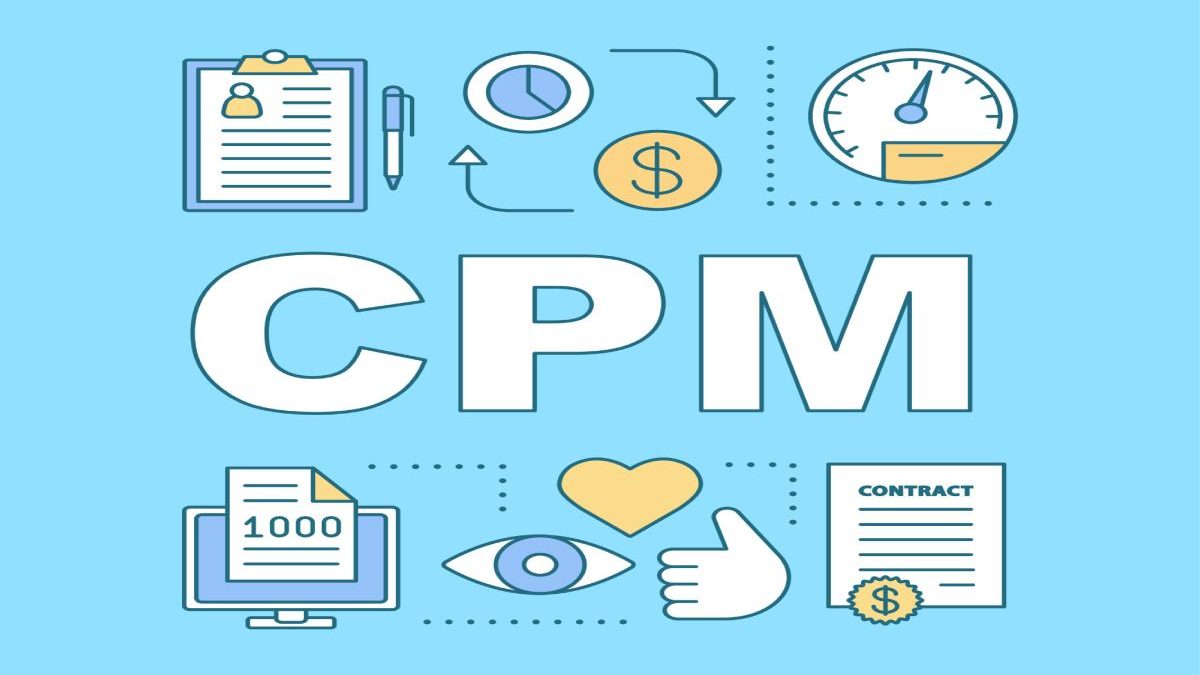CPM is a type of online advertising that advertisers use to pay for each ad impression. It differs from other forms of online advertising in that advertisers only pay when their ads are displayed. This means that you only pay for the number of times your ad was shown and not its click-through rate or conversion rate (which are often much higher).
Table of Contents
CPM Marketing Definition
What is CPM in marketing? CPM marketing is a form of online advertising where the advertiser pays for every thousand impressions or views. The model has existed for decades and is still one of the most commonly used forms of interactive advertising today.
This can be a great option for anyone who wants to monetize their website or blog, but doesn’t want to get into too much technical detail. CPM is an easy way to earn money from your site without having to invest any time or money into it beyond adding ads to your site—and it’s an effective way to make some extra income with minimal effort!
CPM Advertising Explained
CPM stands for cost per mille or cost per thousand. It’s a form of online advertising in which advertisers pay for every 1,000 impressions (or views) of their ad.
CPM is one of the most popular forms of online advertising because it allows advertisers to reach a large audience at a relatively low cost. The CPM price depends on several factors, including:
- The type of site being advertised on.
- The number of people who visit that site regularly.
Why Should You Choose CPM Marketing?
CPM marketing is a cost-per-impression advertising model. It’s also called CPM, CPC, or CPCP (cost per click). With this type of advertising model, you pay for every 1,000 times an ad is displayed on the site. You don’t pay when someone clicks on your ad or even whenever they view it.
The great thing about CPM is that it displays ads based on context and relevance to the content of the site where they are shown. For example, if you were looking at content about fitness and weight loss, then an ad could appear promoting a gym membership or dietary supplement product. This means that people will see more relevant ads, which can help increase conversions compared with other types of display advertising, such as banner ads, where users have very little control over what they see.
Advertising experts like Adroll say, “Look at CPM strategies as a top of the funnel strategy. They focus on collecting a wide amount of eyes on a piece of marketing and depend on other strategies to carry on the funnel.”
How Does CPM Work?
CPM stands for Cost Per Mille. In other words, it is the cost of an ad that you see 1000 times on a website or in an application. For example, let’s say you are browsing through Facebook and see an ad that costs $0.50 per 1000 impressions. This means that if your ad was to get 100000 views, then your total expenditure would be 50 dollars.
The main benefit of using the CPM model is that it allows advertisers to pay only when users are viewing their ads rather than paying for all impressions, whether anyone clicks on them or not.
CPM marketing is a great way to grow your business. It allows you to reach out to the right audience at the right time and place. By choosing CPM advertising, you can effectively target customers who are interested in your products or services without worries about ad fraud or waste of resources.

